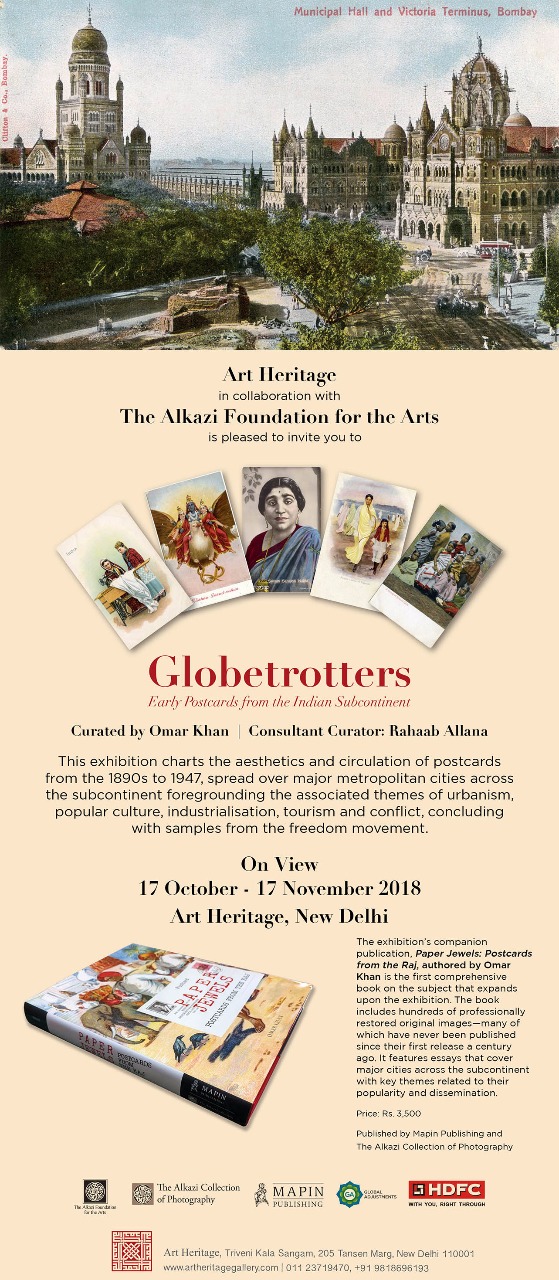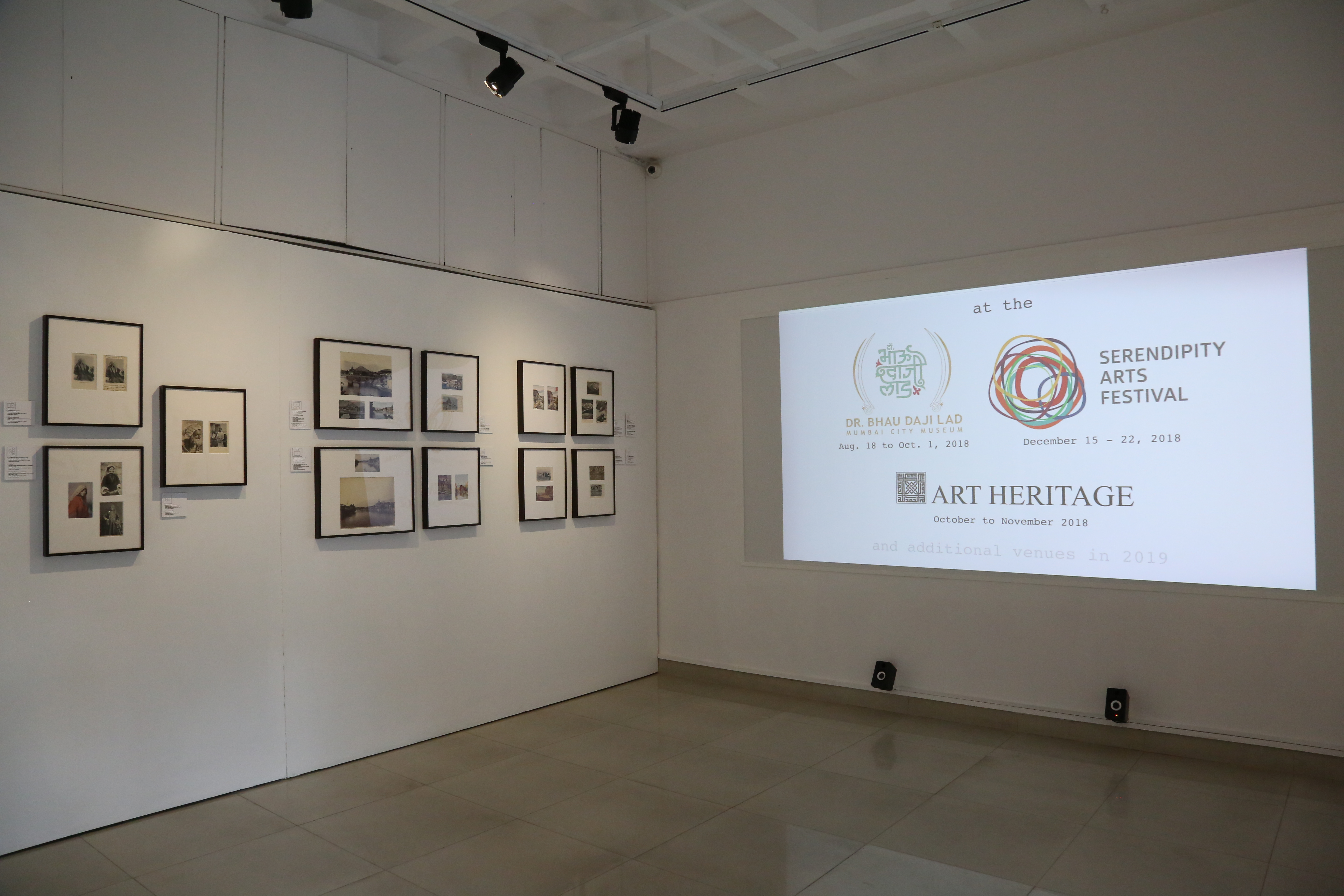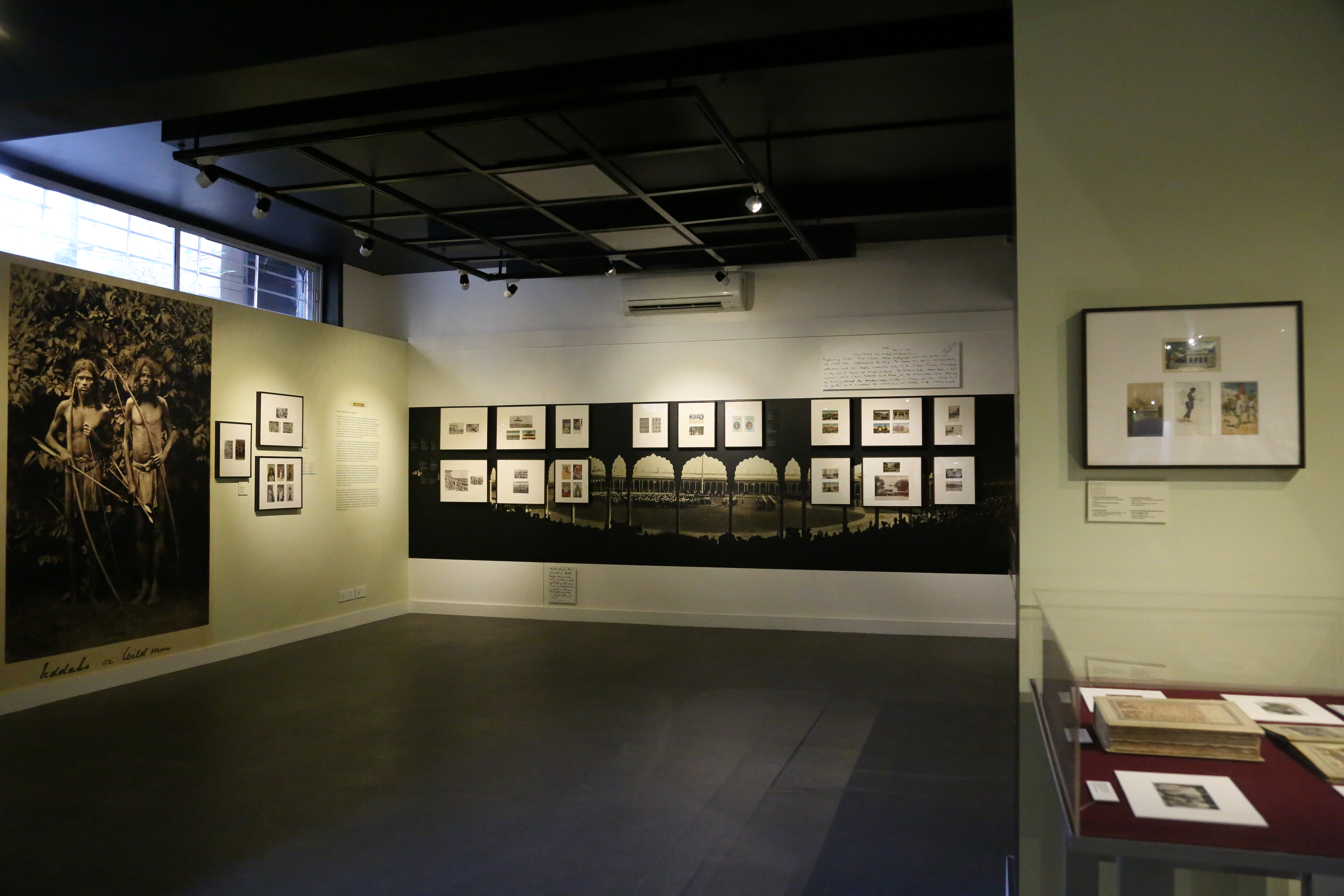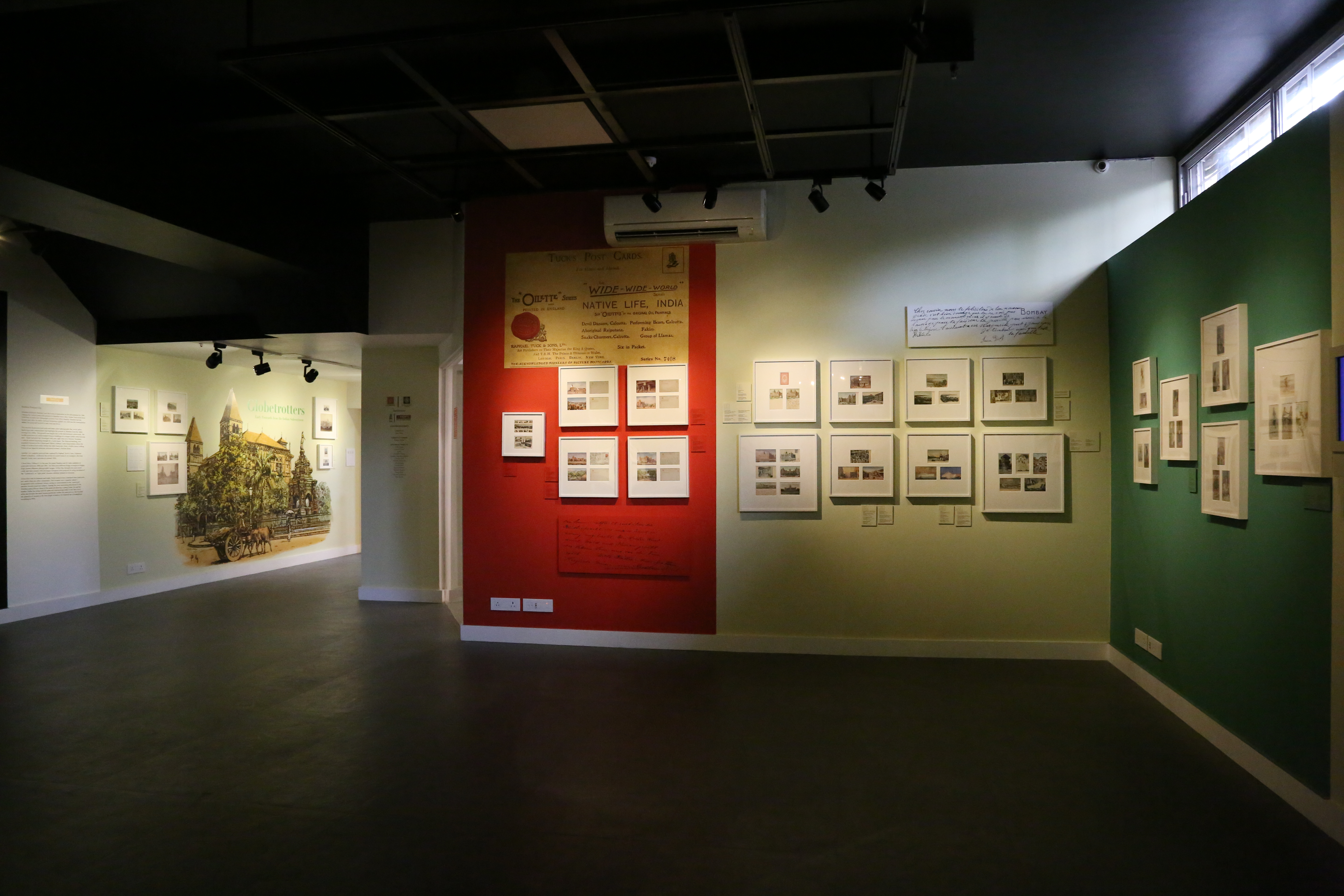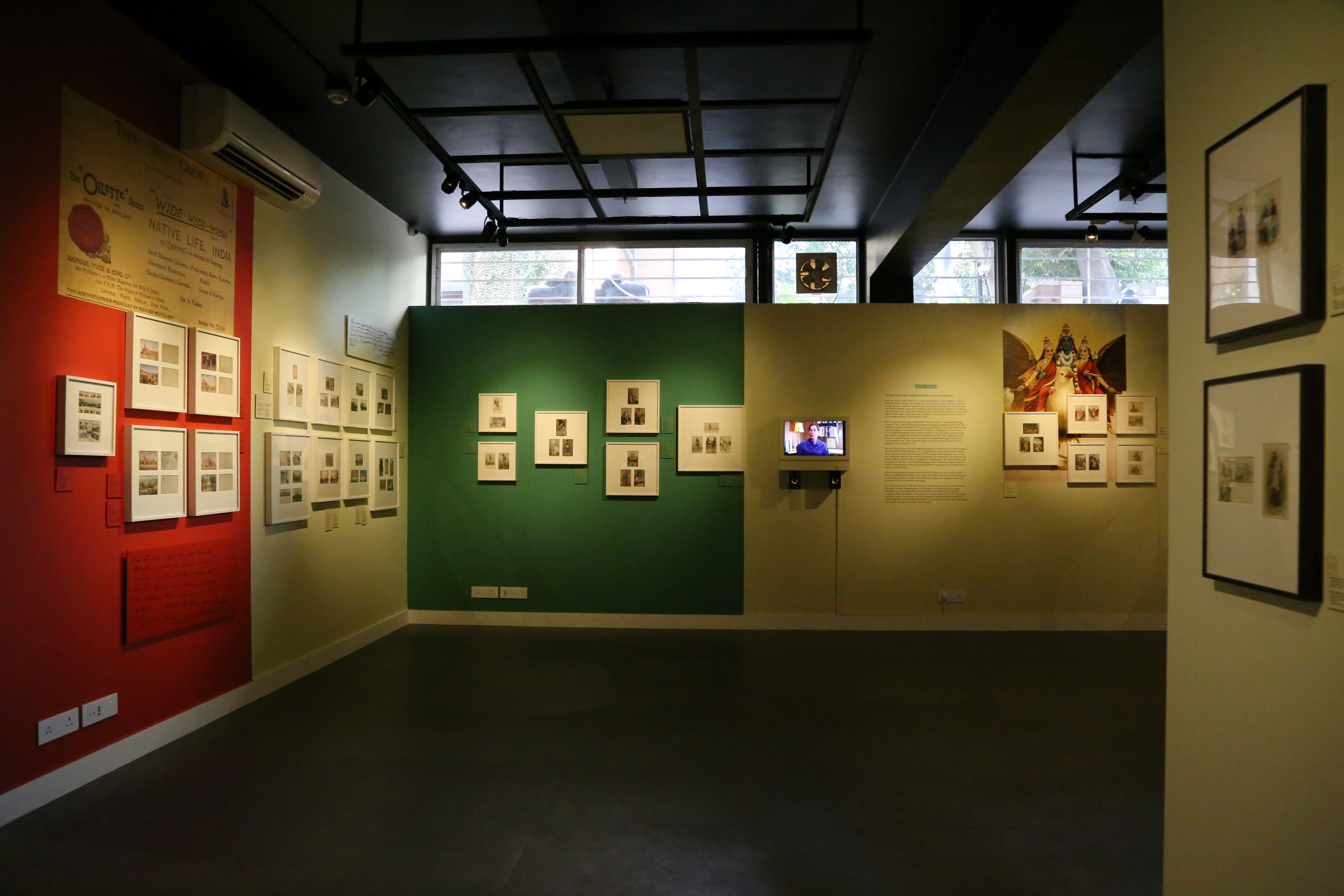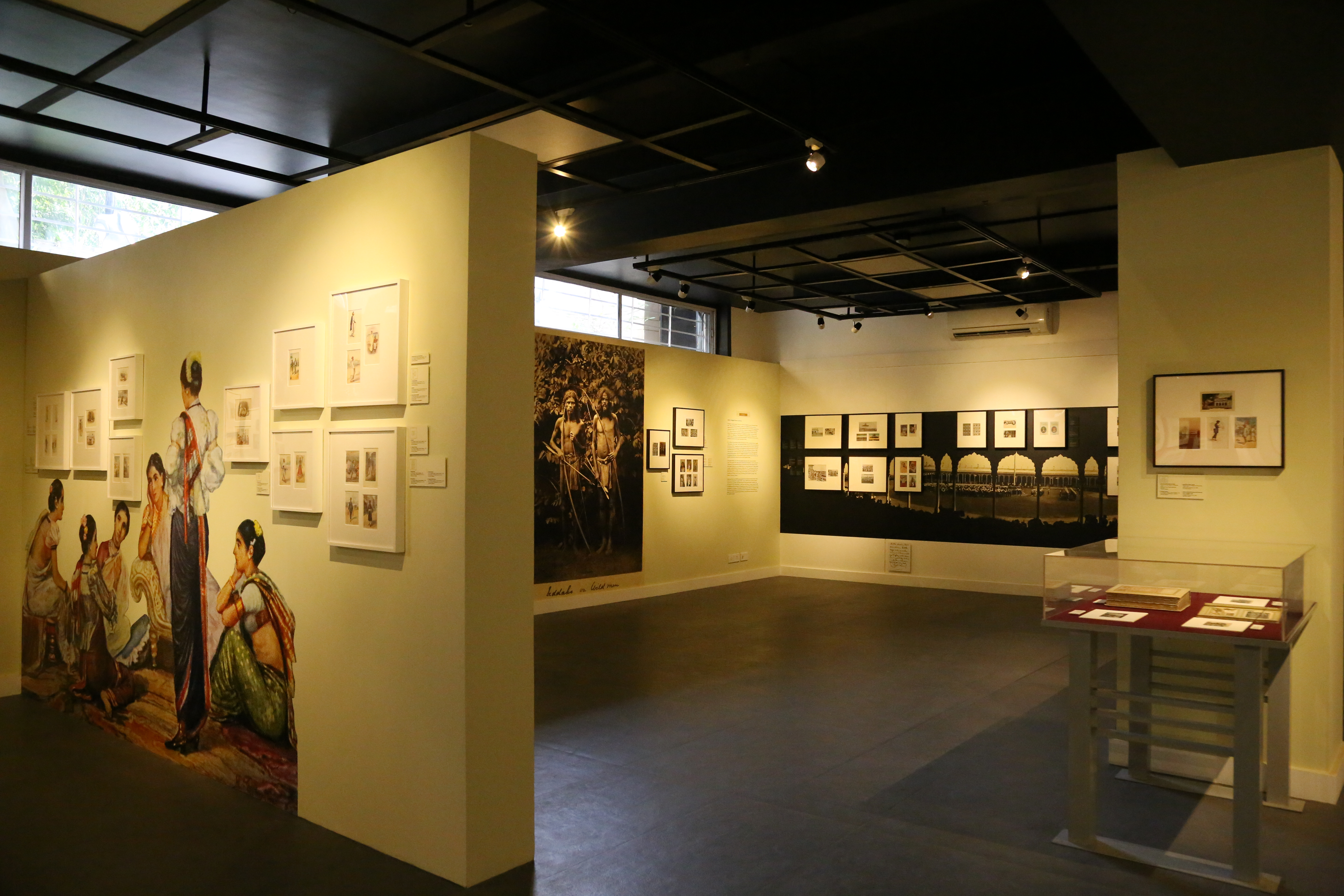PAST EXHIBITION
Globetrotters – Early Postcards from the Indian Subcontinents
Art Heritage in collaboration with The Alkazi Foundation for the Arts presents for the first time in New Delhi, GLOBETROTTERS: Early Postcards from the Indian Subcontinent. The exhibition traces the rise of the picture postcard in the 1890s, heralding the birth of an ubiquitous new media form. Not only was the postcard associated with the invention of photography 50 years prior, and the mass-produced Kodak camera that came out in the 1880s, it played a great role in democratizing photography; illustrated postcards established a swift channel of communication between families, friends and businesses across the world.
While printing technologies, like rapid press lithography were being exploited by small workshops and artisans in European and Indian cities, the very first advertising postcards of the subcontinent were apparently published by the Singer Manufacturing Co. in 1892 for the World Columbian Exposition in Chicago in 1893. The Exposition also marked the first official exposure of America to India: Swami Vivekananda expounded on Hinduism in a series of historic lectures while the painter Raja Ravi Varma won a Gold Medal.
Probably the earliest postcard from an India-based publisher is the postcard Greetings from India, displayed in the exhibition by W. Rossler in Kolkata from around 1897. Billions of postcards exchanged hands internationally between 1898 and 1903, with postcard production in Germany shooting up from under 100 million to almost 1.2 billion/year – two postcards for every person on the planet.
The history of the picture postcard in India is closely intertwined with Germany and Austria, countries where most image postcards were first printed. The very nature of postcards was global: a photograph would be sent to Dresden by a publisher from India, postcards would be struck from it by a printer there and then shipped back to Jaipur to be sold to tourists outside the Hawa Mahal or other tourist spots and finally it would be mailed to London, arriving there two weeks later. A minor miracle for a few annas or pennies.
The Globetrotters exhibition charts the evolution of the postcard between 1880s and Independence in major metropolitan cities across India, highlighting as it does so the associated themes of urbanism, art practice and popular culture, industrialization and tourism, social transformation and eventually, the rise of freedom and nationalism.
Mounted in Art Heritage 1 & 2, the exhibition begins with a representation of the Presidency states and then covers the larger South Asian ambit of postcards in Ceylon and even the North West Frontier.
A section of the exhibition is devoted to images of Delhi as it became the capital in 1911. Preceding these are not only the cityscapes and elite communities but also the mythological, allegorical works of Ravi Varma, who founded a press just outside the city. This year marks the 160th birth anniversary of M.V. Dhurandar, an artist whose works are displayed here too. The final section of the exhibition in Art Heritage 2 explores popular images from the popular hills stations of Shimla, Ooty and the Kashmir Valley. A video on the growth of postcard culture in the subcontinent is an additional treat.
Date
17 Oct - 17 Nov 2018
Medium
Postcards
Publications
Paper Jewels
